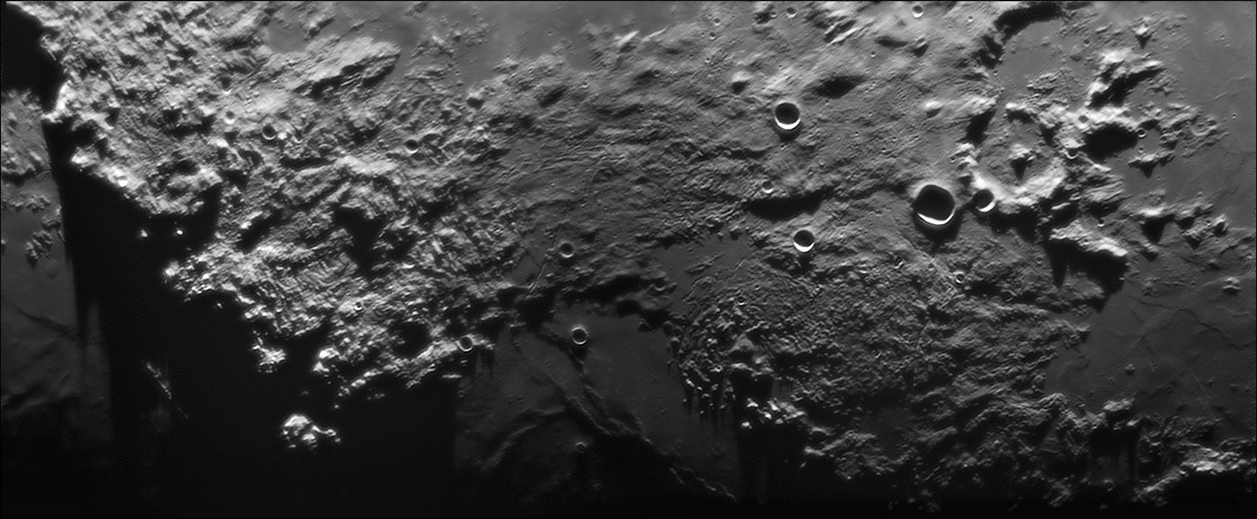image by Stefan Lammel, Uxbridge, England
This panorama is a magnificent study of textures. By placing north at the left we get a different perspective on a sweep of terrains radiating away from the Imbrium Basin. From the peaks of the Apennine Front (far left) Imbrium ejecta swirled and flowed outward, thickly coating existing formations with pasty debris. All that is left of the crater Marco Polo is a bright arc of rim, its floor covered with debris with radial ridges. In front of Marco is a shadow-casting mountain that disappears as the Sun climbs higher. Marco Polo L appears as a black rimless pit with a hill protruding in from the rim. The middle part of the image has a muted roughness, the ejecta being veneered with dark pyroclastic ash that probably erupted from the straight rille that leads toward the deposit. The low Sun nicely shows the dropoff into the Sinus Aestuum basin, which may have an inner ring marked by the curved mare ridges. Travelling further to the south (right) we come to an area of about 100 km width of closely packed small hills. This is a more distant part of the Imbrium ejecta that has not been covered by the pasty material. On the edge of hummocky material is a beautiful hemispheric hill with a shadow (of a pit) at its summit. The Bode Rille sinuously moves through a relatively flat area just north of Bode and then seems to turn abruptly to the west and passes as a linear rille through the hilly terrain; most strange.
Technical Details
10″ f4.8 Newtonian, DMK 21AF04, 4x PowerMate, green filter, 1/30s, gain 730, 900/5000, MAP: 41x 64, Registax v4, PSE 5, Focus Magic.
Related Links:
Rükl charts 22 & 33
Stefan’s website
LPOD earns a commision when you buy ANY book from Amazon thru LPOD Have you bought a book lately?
COMMENTS?
Click on this icon File:PostIcon.jpg at the upper right to post a comment.




